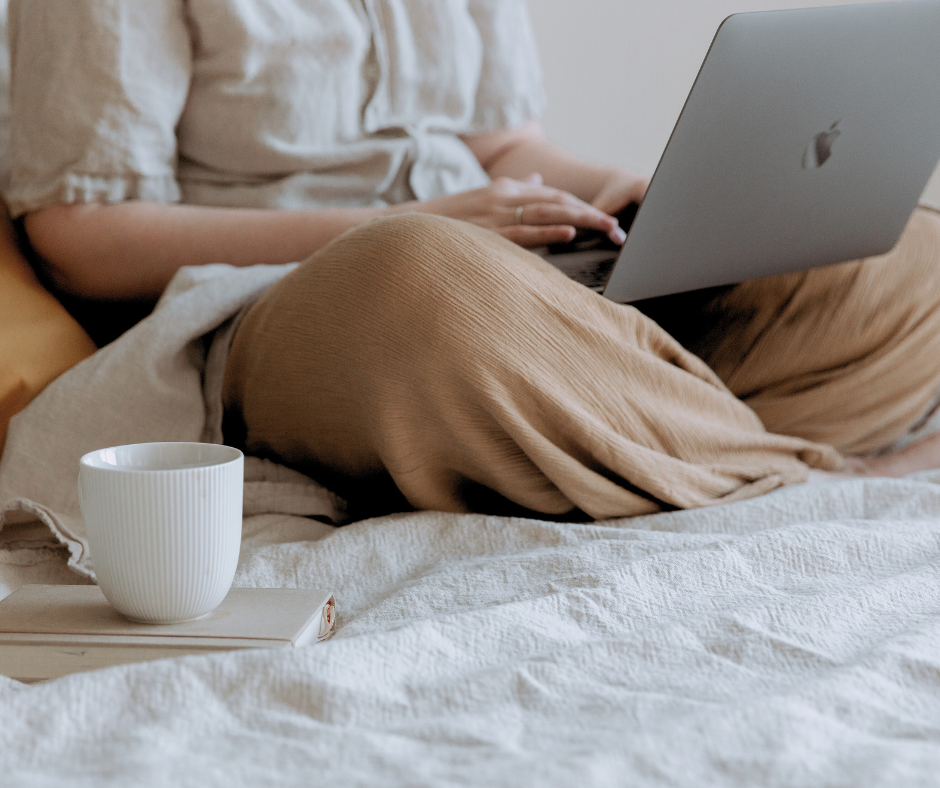

What is Moxibustion, and How Does it Work?
Summary
Reflection Questions
Journal Prompt
Moxibustion is a traditional therapy rooted in ancient Eastern medicine. It involves the burning of mugwort (Artemisia vulgaris) to facilitate healing. Originating several millennia ago, this technique is a significant part of many Eastern therapeutic practices, particularly in Chinese medicine. Moxibustion is traditionally used to strengthen the blood, stimulate the flow of qi, and maintain general health. Its application, often in conjunction with acupuncture, reflects a deep-seated belief in the interconnectedness of the body and its environment. In this article, we will delve into the intricacies of moxibustion, exploring its methods, underlying principles, and its enduring relevance in contemporary health practices. Read on to learn more.
Understanding Moxibustion
Moxibustion is a traditional therapeutic practice that involves the burning of specific materials to apply heat to certain points of the body. This therapy, integral to traditional Chinese medicine, is based on the same principles as acupuncture but uses heat instead of needles.
The core belief underlying moxibustion is that the heat generated during the process helps in stimulating circulation, enhancing the flow of qi (vital energy), and facilitating the body’s natural healing processes. Moxibustion is often employed to treat and prevent a wide range of health conditions, underpinned by the philosophy of balancing the yin and yang energies within the body.
Direct vs Indirect Moxibustion Therapy
There are two primary types of moxibustion: direct and indirect. In direct moxibustion, a small amount of moxa, the material used for burning, is placed directly on the skin and ignited. This method is further divided into scarring and non-scarring types, with the former leaving a blister on the skin and the latter removed before causing a burn.
Indirect moxibustion, more commonly used due to its safety, involves placing the burning moxa either on the top of an acupuncture needle, suspended above the skin, or on a barrier like ginger or garlic. This method warms the acupuncture points more gently and is considered less invasive.
Materials and Methods
The primary material used in moxibustion is mugwort, known scientifically as Artemisia vulgaris. Mugwort is chosen for its unique properties; when burned, it produces a penetrating heat that is believed to permeate deeply into the body.
The leaves of the mugwort plant are dried and then ground into a fluffy substance known as moxa. This moxa can be molded into various forms, such as cones or sticks, depending on the method of application. The quality of mugwort and its preparation is crucial, as it directly influences the efficacy and safety of the moxibustion treatment.
The Process of Moxibustion
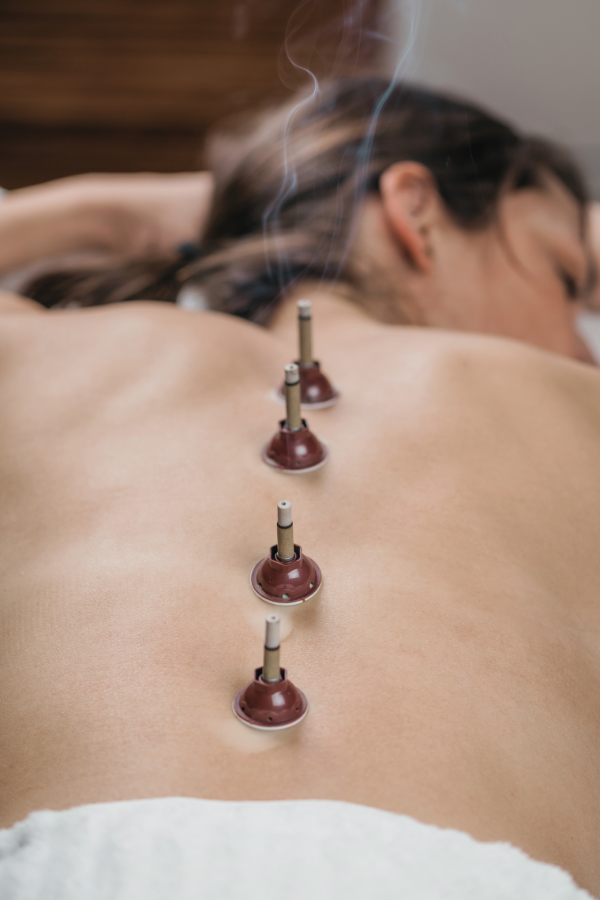

The process of moxibustion typically begins with the practitioner identifying the specific points on the body where treatment is needed. These points are generally the same as those used in acupuncture. Once the points are located, the area is cleaned, and the patient is positioned comfortably. The practitioner then prepares the moxa, commonly in the form of a stick or cone, which is lit to produce a smoldering effect. Approaches are slightly different between direct and indirect moxibustion.
Indirect Moxibustion Process
In the case of indirect moxibustion, the lit moxa is held close to the skin, warming the targeted area without direct contact. The practitioner maintains the moxa at a distance where the patient feels a deep, penetrating warmth without any discomfort. The process continues until the area becomes slightly red, indicating the stimulation of qi flow and blood circulation.
Direct Moxibustion Process
In direct moxibustion, the process is more intense. A small amount of moxa is placed directly on the skin or on a medium like garlic or ginger, which acts as a buffer. The moxa is then ignited and allowed to burn until the patient feels a sensation of heat, but not pain.
The burning moxa stick is extinguished or removed before it causes any burn or blister, especially in non-scarring direct moxibustion. The practitioner closely monitors the patient’s reaction to ensure safety and comfort.
In contrast, indirect moxibustion, which is more commonly practiced, involves holding a moxa stick close to the skin, rotating it in a circular motion to ensure even distribution of heat. In some techniques, the moxa is placed atop an acupuncture needle, enhancing the needle’s therapeutic effect with heat.
Does Moxibustion Hurt?
Moxibustion is generally not considered painful, especially when performed correctly by a skilled practitioner. The primary sensation experienced during moxibustion is a deep, penetrating warmth as the heat from the burning moxa (mugwort) is applied to the skin. This warmth is intended to stimulate specific points on the body and is usually found to be quite soothing and relaxing.
However, the experience can vary depending on the type of moxibustion and the individual’s sensitivity, as described below.
Indirect Moxibustion: This is the more common and gentle method, where the moxa is not in direct contact with the skin. It provides a pleasant warming sensation without discomfort.
Direct Moxibustion: This type can be more intense. In scarring moxibustion, the moxa cone rests directly on the skin over the treatment point and may cause a burn, which is intended to leave a small, healing blister. Non-scarring direct moxibustion involves removing the moxa before it burns the skin, thereby reducing the risk of pain or discomfort.
It’s important to communicate with the practitioner throughout the session about the heat intensity and any discomfort. When practiced safely and professionally, moxibustion should not be painful, and any discomfort should be immediately addressed.
Acupuncture and Moxibustion
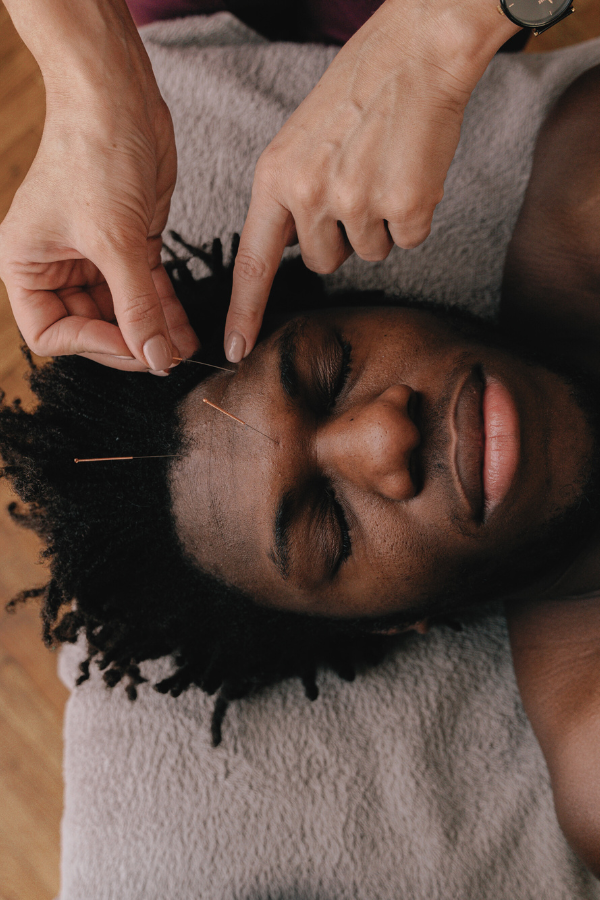

The role of acupuncture points in moxibustion is fundamental. These points are strategic locations on the body, mapped out in traditional medicine, where qi or vital energy is believed to flow. The selection of these points is based on the specific condition being treated.
For example, certain points are chosen for digestive issues, others for pain relief, and yet others for boosting the immune system. The application of heat to these points through moxibustion aims to stimulate qi and blood flow, alleviate stagnation, and balance the body’s internal energies.
The precision in selecting and targeting these points with acupuncture needles or heat is crucial for the effectiveness of the therapy. Practitioners often use moxibustion in conjunction with acupuncture, enhancing the benefits of both treatments by combining needle stimulation with thermal therapy.
Scientific Basis: Does Moxibustion Work?
The effectiveness of moxibustion is underpinned by several theories, primarily rooted in traditional Chinese medicine (TCM). One core principle is the concept of Qi, the vital life energy that flows through the body’s meridians. Moxibustion is believed to stimulate this flow of Qi, thereby promoting health and healing.
Another theory involves the balance of Yin and Yang within the body, with moxibustion seen as a method to restore this balance and eliminate pathogenic factors. Additionally, the warmth and heat generated by moxibustion are thought to penetrate deeply into the body, improving blood circulation and dispelling cold and dampness, which are considered in TCM to be causes of disease.
These theories, while integral to understanding moxibustion in the context of TCM, often lack empirical support from a Western medical perspective, leading to ongoing research and investigation into the mechanisms behind moxibustion.
Evidence of the Effectiveness of Moxibustion Therapy
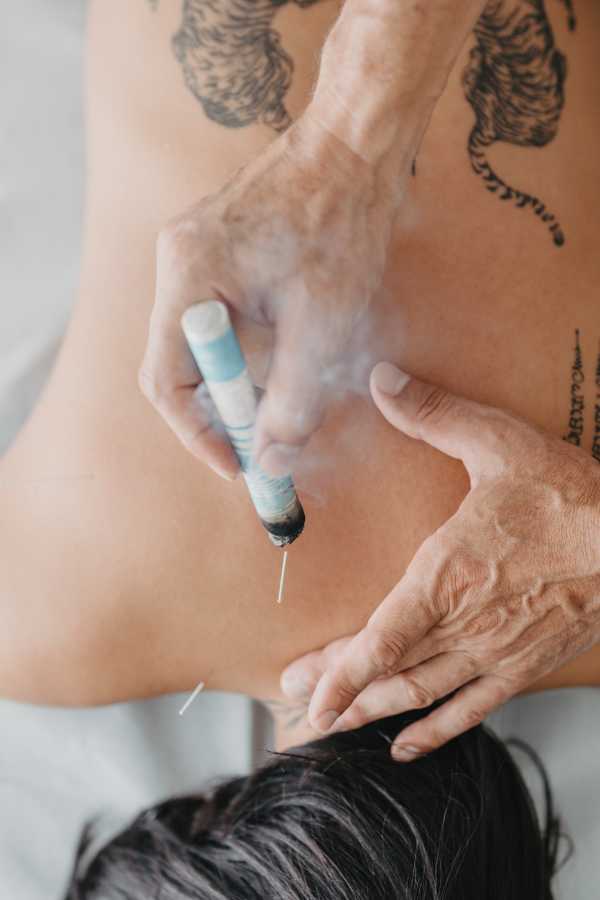

From a scientific standpoint, several explanations have been proposed for the therapeutic effects of moxibustion. One hypothesis suggests that the heat generated by moxibustion stimulates the body’s sensory neurons, which can lead to the release of natural painkillers like endorphins and enkephalins.
Another theory posits that thermal stimulation may enhance blood flow in the treated areas, facilitating tissue repair, reducing inflammation, and limiting joint pain. Additionally, the heat from moxibustion could potentially stimulate the immune system, enhancing the body’s natural defense mechanisms. Research in biomedicine is increasingly focusing on understanding these potential mechanisms, seeking to bridge the gap between traditional practices and modern scientific explanations.
Modern research studies have started to shed light on the potential benefits and mechanisms of moxibustion. Clinical trials and laboratory research have explored its impact on various conditions, such as chronic pain, arthritis, and digestive disorders. For example, this study published in the Journal of Evidence-Based Complementary and Alternative Medicine found that “Moxibustion thermal stimulation affects both shallow and deep tissues of the skin, and the warm-heat effects of moxibustion have a close relation to the warm receptors or/and the polymodal receptor.”
Some studies have indicated the positive effects of moxibustion in reducing pain and inflammation, supporting its traditional use for these purposes. Others have investigated its role in immune modulation, suggesting that moxibustion may influence immune cell activity and cytokine production.
However, it’s important to note that much of the research is still preliminary, and the results are often mixed or inconclusive. For example, the results of this study were inconclusive. Its authors concluded by noting that only an experienced and properly trained expert should perform moxibustion. The challenge remains to design rigorous, well-controlled studies that can provide more definitive evidence regarding the efficacy and mechanisms of moxibustion.
Potential Health Benefits and Uses
Moxibustion is traditionally used to treat a wide range of ailments and conditions, reflecting its versatility in traditional Chinese medicine. One of the most common uses is for pain relief, particularly in cases of chronic pain such as arthritis and muscle stiffness.
It is also frequently employed to improve digestive health, addressing issues like diarrhea, constipation, and irritable bowel syndrome. In respiratory conditions, moxibustion has been used to alleviate symptoms of asthma and bronchitis.
Women’s health is another area where moxibustion finds application, notably in the treatment of menstrual cramps and to aid in the correction of breech presentations during pregnancy. Furthermore, this heat therapy is believed to boost the immune system, thereby helping in the prevention of colds and flu, and to enhance overall energy and vitality.
Evidence to Support These Benefits
The evidence supporting the efficacy of moxibustion in treating these conditions varies. For pain management, particularly in cases of arthritis, some studies have reported reduced pain levels and improved joint function following moxibustion therapy.
In the context of digestive health, preliminary research suggests that moxibustion may help in regulating gastrointestinal functions, although more robust clinical trials are needed to confirm these findings. The use of moxibustion for respiratory conditions has been less extensively studied, but there is some anecdotal evidence and early research indicating potential benefits.
One of the more widely recognized applications is in the correction of breech presentations during pregnancy, with several studies demonstrating a significant rate of success in turning breech babies into a normal head-down position. For example, the study “Effectiveness and Safety of Acupuncture and Moxibustion in Pregnant Women with Noncephalic Presentation: An Overview of Systematic Reviews” supports claims that moxibustion could help in these cases. However, it is crucial to note that while these findings are promising, many studies on moxibustion are limited by small sample sizes, lack of control groups, or other methodological issues.
Therefore, further acupuncture and meridian studies are necessary to substantiate these claims and understand the extent of moxibustion’s therapeutic effects.
Safety and Side Effects
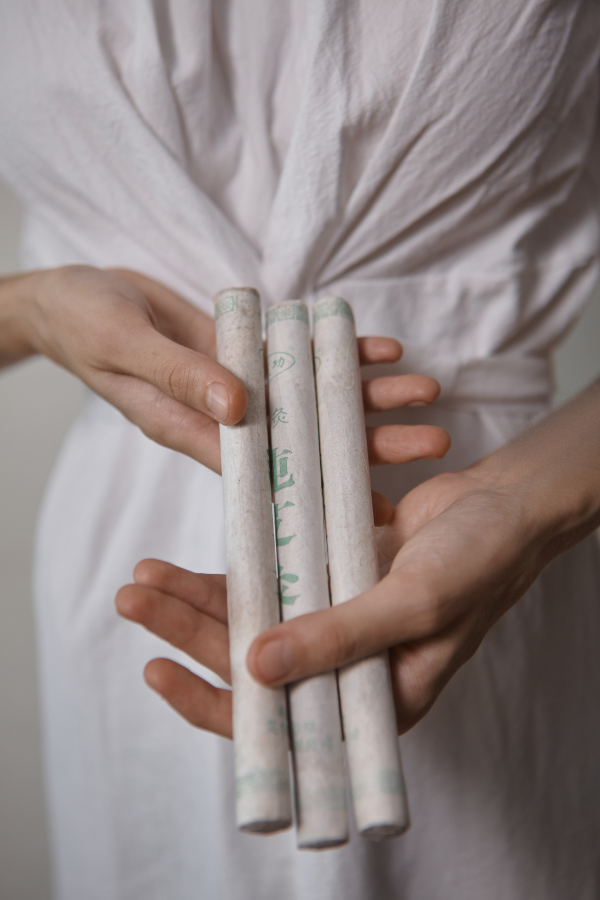

While moxibustion is generally considered safe when performed by a trained practitioner, there are potential risks and side effects associated with this therapy. The most immediate risk is that of burns, as the therapy involves the application of heat close to or directly on the skin. These burns can range from minor to severe, particularly in the case of direct moxibustion.
There is also a risk of fire hazards, given the use of open flames. Inhaling the smoke produced during moxibustion can irritate the respiratory system, especially in individuals with pre-existing respiratory conditions or allergies. Additionally, overstimulation at the treatment points can lead to localized pain, redness, or blistering.
Precautions
To maintain good health and avoid unwanted side effects, there are specific precautions and contraindications to consider before undergoing moxibustion. It is generally advised that pregnant women should avoid moxibustion on certain points that might stimulate uterine contractions, except in controlled circumstances like the correction of breech presentations.
Individuals with diabetes or other conditions that affect sensation should exercise caution, as they may not be able to feel the intensity of the heat, increasing the risk of burns. Moxibustion should not be performed over broken skin or on areas with significant hair. Additionally, it is important to inform the practitioner of any known allergies to mugwort or similar herbs to prevent allergic reactions.
Working with a Trained Moxibustion Practitioner
To ensure safe practice, several guidelines should be followed during moxibustion therapy. Practitioners should be well-trained and knowledgeable about the appropriate application techniques and safety measures. The treatment area should be well-ventilated to avoid inhalation of excessive smoke.
During the treatment, communication between the practitioner and the patient is key to monitor the heat intensity and the patient’s comfort level. It is important to use quality moxa sticks or cones to minimize the risk of unpredictable burning patterns. Post-treatment, patients should be advised to monitor the treated areas for any signs of adverse reactions and to seek medical attention if necessary.
The practice environment for moxibustion should adhere to strict safety standards. This includes having fire extinguishing tools readily available and ensuring that flammable materials are kept at a safe distance. The practitioner should have a clear understanding of the patient’s medical history and current health condition to make informed decisions about the suitability and approach of the treatment. Regular training and updates on safety protocols are essential for practitioners to maintain high safety standards in their practice.
Consulting Your Doctor Before Scheduling Moxibustion Treatment
Patients considering moxibustion therapy should consult with a healthcare professional to assess its suitability, especially if they have existing health conditions or are taking medication that could interact with the treatment.
Patients should seek treatment from licensed or certified practitioners who have a thorough understanding of the therapy’s principles and safety precautions. By adhering to these guidelines and taking appropriate precautions, the risks associated with moxibustion can be minimized, making it a safer therapeutic option for those seeking alternative treatments.
Comparison with Other Therapies
Moxibustion and acupuncture are both key components of Chinese traditional medicine and share several similarities, most notably their use of specific points on the body to stimulate and balance energy flow. Both practices are based on the concept of Qi and aim to correct imbalances in the body’s energy system.
However, their methods of stimulation are where they differ significantly. Acupuncture involves the insertion of fine needles into certain acupuncture points to stimulate the body’s energy flow, while traditional moxibustion uses heat from burning mugwort (from a moxa cone or stick) over each acupuncture point to achieve a similar effect.
Acupuncture is often regarded as less invasive and is widely accepted in Western medicine, whereas moxibustion is less commonly practiced and researched in Western countries. Additionally, the sensations and therapeutic effects experienced by patients can differ, with moxibustion providing a pleasant heating sensation that some find more soothing than the feeling of acupuncture needles.
Moxibustion in Conjunction with Other Treatment Modalities
In integrative medicine, moxibustion holds a unique place alongside other alternative therapies. Integrative medicine aims to combine the best of Western medical practices with traditional and alternative therapies to provide holistic care. In this context, moxibustion is often used alongside acupuncture.
It is also used alongside other modalities like herbal medicine, massage, and dietary therapy. This integrative approach allows for a more comprehensive treatment plan that addresses both the physical and energetic aspects of health. Moxibustion’s ability to provide deep, warming stimulation makes it particularly useful in conditions where traditional acupuncture or Western treatments alone may not be as effective, such as in chronic pain conditions or where there is a need to invigorate the body’s energy.
The use of moxibustion in integrative medicine highlights the growing recognition of the value of traditional practices in modern healthcare.
Final Thoughts on Moxibustion
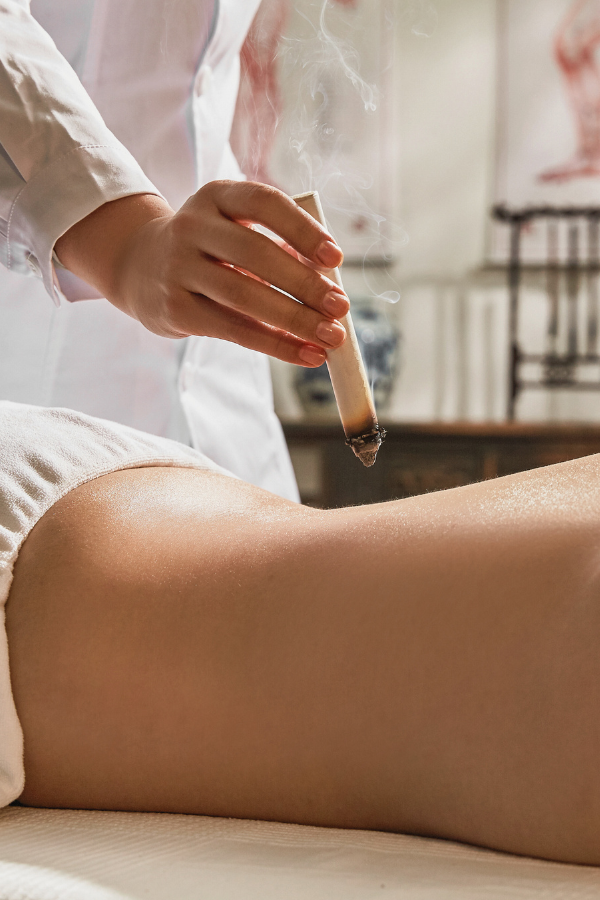

The scientific exploration into moxibustion’s effectiveness, although still evolving, indicates potential benefits in treating various ailments, from pain management to digestive and respiratory conditions. Despite its ancient roots, moxibustion continues to find relevance in contemporary healthcare, enjoying varying degrees of integration and acceptance across the world. Looking forward, the future of moxibustion in healthcare appears promising, particularly as the global medical community grows increasingly receptive to integrative approaches. This trend suggests a continued exploration and potential expansion of moxibustion’s role, bridging traditional wisdom with modern healthcare practices. As always, we encourage readers to consult with their physicians before entering into any new form of treatment.







